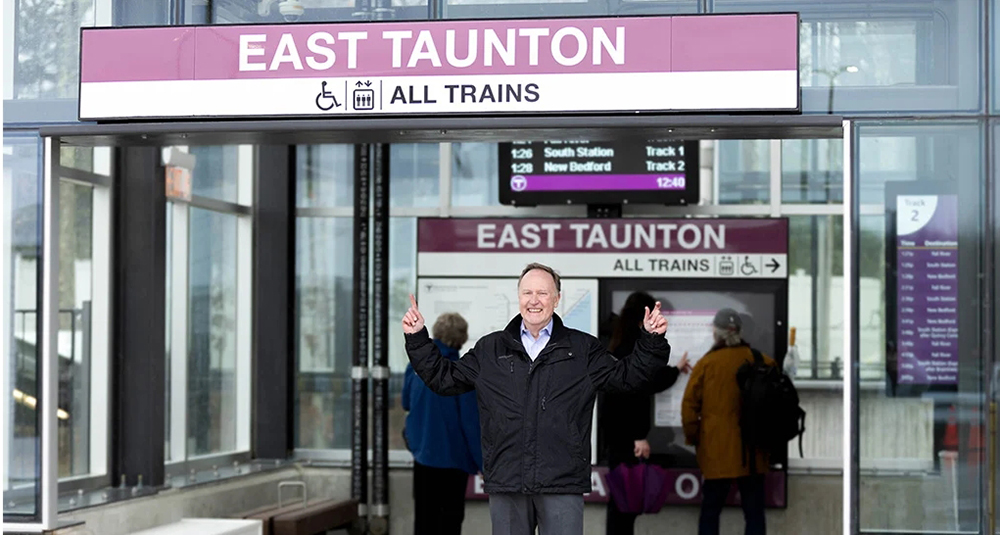Core Boston and Cambridge real estate markets continue at a breakneck pace - by Webster Collins

CBRE/New England
My article one year ago for this issue of the NEREJ was titled “The Boston and Cambridge Market is Extremely Strong with No Challenges in Place.” This article will echo my 2016 theme and then provide a case study as a reality check as an indicator of what being in a non-core location can mean.
For the past four years, market statistics for office and office lab space is summarized as follows.
For the city of Boston, the market has grown by 4,951,517 s/f and in terms of absorption the needle on vacancy has moved by only 399,651 s/f. The statistics are even stronger for Cambridge. The office/lab market in a city of only 114,000± people has grown by 4,156,928 s/f and has seen its vacancy rate decline from 6.8% to 4.3%. In terms of rents, average asking office rents have increased in the city of Boston from $45.85 per s/f Q3 2013 to $56.92 per s/f Q3 2017.
In Cambridge, rent movement has been far greater. Average office asking rents have moved from $42.81 per s/f to $68.35 per s/f. Office/lab space is leased on a NNN basis. Q3 2013 rents have moved from $52.12 per s/f NNN in East Cambridge to $77.36 per s/f NNN in Q3 2017, a 48% increase.
The Spin-Offs of Breakneck Market Conditions
The primary spin off is that the few land sites that are available have become frightfully expensive. The traditional approach to valuing land in core locations is price per buildable foot. This technique has fallen out the window. The only way today to analyze is development modeling. Costs are key and developers expected yield to reflect at least a 20% profit which is part of the equation.
Land values have tripled in this up market. When you equate price to FAR, numbers which at one time were at the $90-110/FAR, today are at least $275/FAR or higher for office/lab space.
Zoning is a negotiation and zoning attorneys are key to any purchase or sale decision.
Finally, there are multiple rounds of bids and multiple bidders that make up the core Boston/Cambridge market.
To what do I attribute these incredibly strong market conditions? It is the Harvard/MIT “effect!” Start up companies are the main market driver backed by a plentiful supply of venture capital. On top of this, off shore money has targeted Boston’s core and built a floor under the market in support of record prices.
Boston’s Non-Core Market – The Distant Suburbs
As of Q3 2013, a 20.5% office market vacancy existed in suburban Boston. Vacancy rates today as of Q3 2017 still remain high at 19.0%. Office buildings have been constructed to the tune of 8,134,757 s/f of new construction yet actual vacancy remains about the same as Q3 2013, at the 22,800,000 s/f level.
In the 1980s, the place to invest was the I-495 belt. One of the first office/flex parks was developed by Metropolitan Life along Nickerson Rd. in Marlborough. The first 7 buildings were constructed between 1982 and 1988. Re-named Marlborough Technology Park and after $9.8 million was recently spent to upgrade, the park which contains 584,648 s/f just sold for $46 million or $78.68 per s/f. The NNN rent in place is not much different than it was when I was appraising these properties for Metropolitan Life when built. The only way I can see change in value is re-use.
Conclusion
The real beneficiary of the super hot core Boston/Cambridge markets have been close-in I 95/128 belt properties. New England Industrial Park, built by Cabot, Cabot & Forbes in 1950-1956, has undergone great change with the new Kendrick St. interchange, and the Trip Advisor headquarters building. Office rents are now at $35± per s/f gross. Moves in value have occurred commensurate with market change.
Investors in making purchase decisions study the “drivers of business.” As all as one needs to do is look at locations which carry high availability rates as an indicator of submarket investment conditions. The suburban office markets with high availability rates include Rte. 495-Mass Pike West (24.8%), Rte. 2 West (27.2%), and Northeast (26.9%). The highest availability rate is in Chelmsford at 32.4%. the drivers of business are the companies close to Boston.
What always lurks in the background are interest rates. If interest rates rise, this is the only “brake” that I can see to the breakneck pace of this very long core market expansion that we are now in which could push out to 2020.
Webster Collins, MAI, CRE, FRICS is an executive vice president/partner in the valuation and advisory services group of CBRE/New England, Boston.
Check out the New England Real Estate Journal's 2025 Fall Preview Spotlight
Explore our Fall Preview Spotlight, featuring exclusive Q&As with leading commercial real estate professionals and in-depth byline articles on today’s most relevant market topics. Gain insight into the trends, challenges, and opportunities shaping New England’s commercial real estate landscape this fall.


How long should I hold a property for it to qualify as an investment property in connection with a 1031 tax-deferred exchange? - by Brendan Greene and Mark McCue

30 years on South Coast Rail: A journey to connect Southeastern Mass. with commuter rail - by Rick Carey

Shallow-bay wins on 495/128: A renewal-driven market with a thin pipeline - by Nate Nickerson











.png)